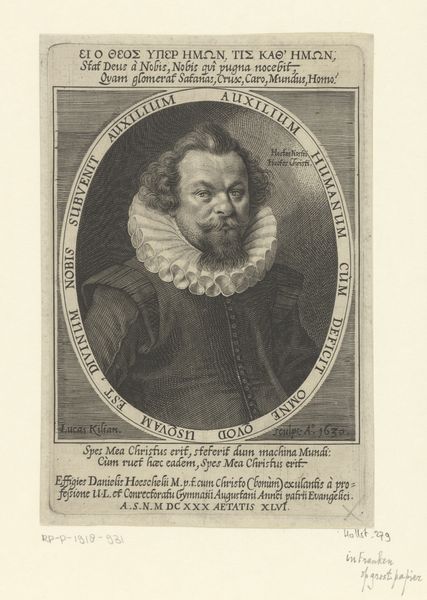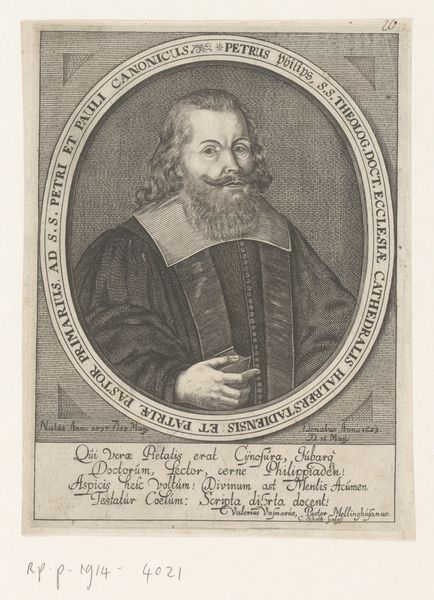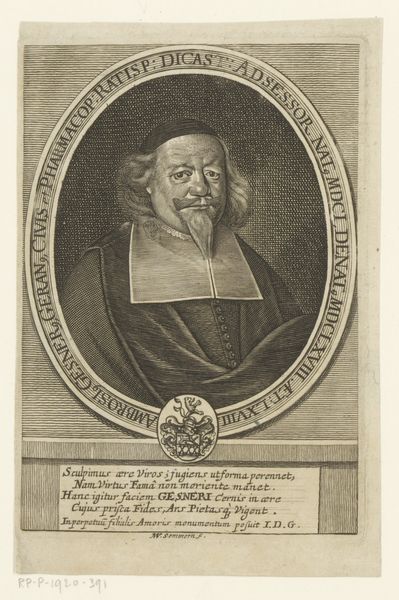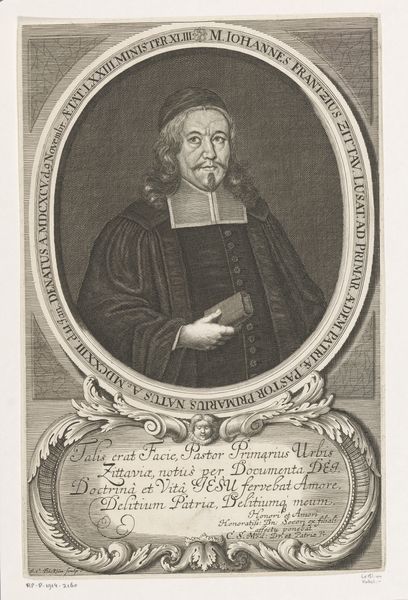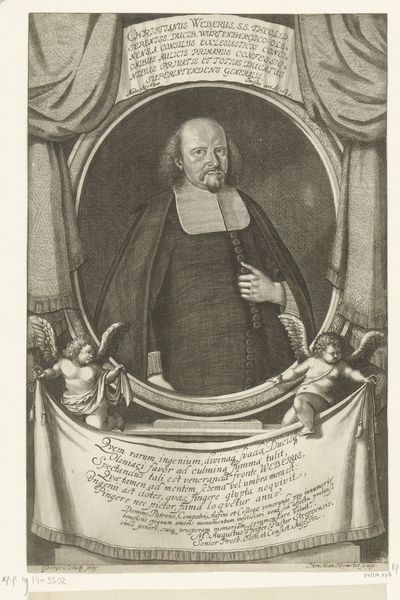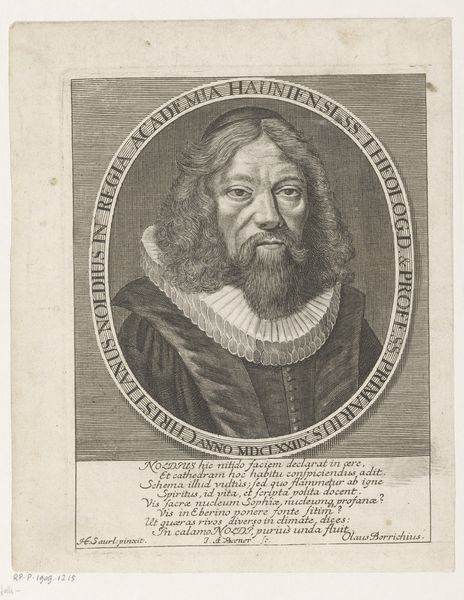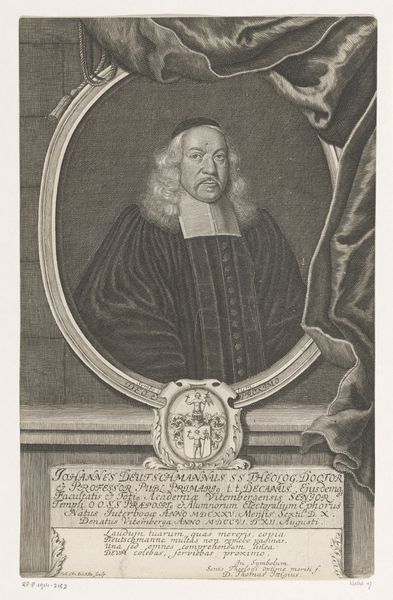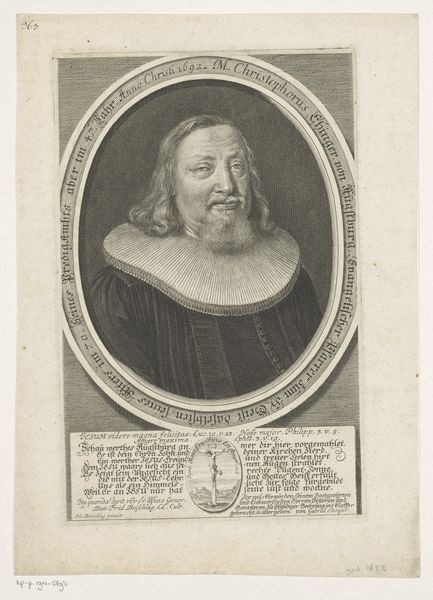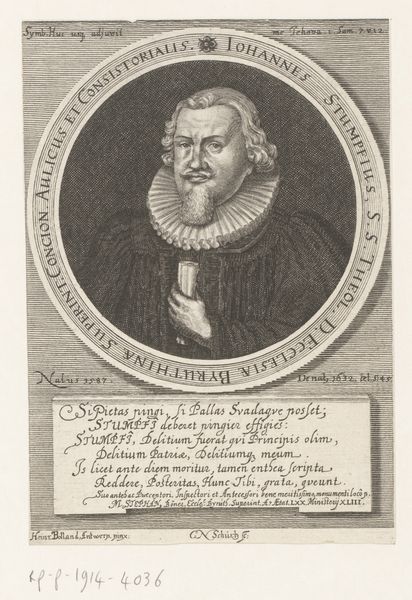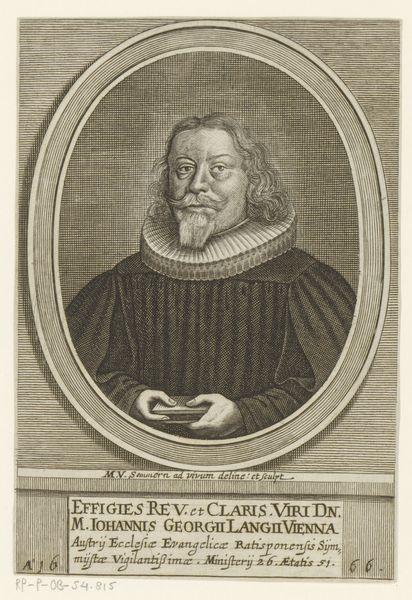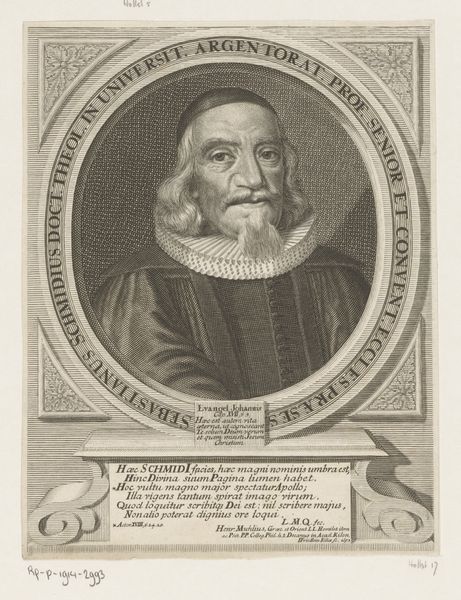
print, engraving
#
portrait
#
baroque
# print
#
history-painting
#
northern-renaissance
#
engraving
Dimensions: height 302 mm, width 195 mm
Copyright: Rijks Museum: Open Domain
Curator: We're looking at "Portret van Georg Philipp Ris," a baroque engraving crafted in 1683 by Elias Hainzelmann. It’s held in the Rijksmuseum. Editor: My first impression is one of solemn dignity. The tight, controlled lines of the engraving seem perfectly suited to capture the gravity of his expression and that starched ruff! The symmetry of the oval portrait also adds a sense of formality. Curator: Indeed. Engravings of this nature played a vital role in disseminating images of prominent figures across 17th-century Europe. The portrait serves as both a representation of Georg Philipp Ris and a marker of his social standing within his community. Note the inclusion of the heraldic crest below the portrait. Editor: Let's discuss technique for a moment. The incredible level of detail achieved solely through line work – creating shading and texture. It exemplifies the skill involved in printmaking during this era, especially observing the face, as his features gain complexity through the manipulation of shadow and light. Curator: And beyond the technical skill, there's the inherent symbolic element. Portraiture has always been as much about conveying status as it is about physical likeness. The baroque style amplifies this through carefully orchestrated composition, suggesting that he represents both religious piety and authority. Editor: I see your point. There’s certainly a performative aspect to portraiture. Consider, also, the intended audience for such prints. They circulated amongst the elite, reinforcing existing hierarchies and cultural values. These kinds of images had real power to influence perceptions of public figures. Curator: Yes. And consider the use of text to underscore this idea. There are clearly delineated words underneath, with dedications intended to exalt Ris and remind audiences of the virtue that he represents. Editor: So, the formal austerity of the composition and technique speaks to the complex negotiations of identity and power happening within 17th-century Northern Europe. This isn’t simply a representation, it's an active statement. Curator: Precisely. Looking at it in those terms, it gives us something else to think about.
Comments
No comments
Be the first to comment and join the conversation on the ultimate creative platform.

